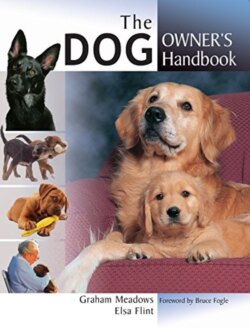Читать книгу The Dog Owner's Handbook - Graham Meadows - Страница 10
На сайте Литреса книга снята с продажи.
The development of dog types
ОглавлениеThe process of selection and refinement lasted many thousands of years, and was based on the human needs for food, protection and companionship. Dogs had an excellent sense of smell and were faster and more agile than men, so they proved to be valuable allies when it came to tracking and hunting the animals on which humans relied for their food, skins and fur. Dogs also proved useful for watch and guard duty, and for killing the vermin that were attracted to the food in the human encampments. Some wolves proved better at certain tasks than others, and human selection gradually produced different types of dog.
During the Neolithic Age, which started about 8,000 years ago, humans learned to grow crops. They also domesticated and farmed goats, sheep and cattle, so they selected dogs to provide a further service: herding.
By choosing their primitive domestic dogs for different purposes, humans incidentally selected for particular characteristics. Among these were temperament, body shape and body size.
It is suggested that in selecting for temperament they chose animals that were playful, outgoing and showed little aggression towards people, yet readily barked at the appearance of intruders. These traits were consistent with the behaviour of young animals, and over a period of time resulted in an adult population that retained many ’puppy’ characteristics. Scientifically, this is referred to as ‘neoteny’.
In developing a dog type, body shape and size were clearly important. Dogs required to hunt fast-running prey needed speed and agility, and therefore a relatively light, fine-boned body with long legs and a flexible spine. Large, strong dogs were required to hunt prey such as gazelles, but dogs used for hunting hares could be smaller. A dog whose job was to catch rats or dig out a rabbit’s burrow needed quickness and agility, and thus a compact body and short legs.
A dog required to haul loads needed to be strong and sturdy, and bigger to support the large masses of muscle.
Temperament was also an important factor. A large dog developed for guard duties had to have the courage to face an intruder and display aggression. An equally large dog developed to haul loads, a job in which it regularly came into contact with strangers, had to be trusting and remain calm. A small ratting dog needed to retain its innate hunting instinct so that it would immediately snap at vermin.
The ancient Egyptian dog-god Anubis, the god of the underworld.
